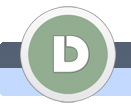|
|
|
|
|
Setting up PHP and MySql testing server with WAMP
If you want to start learning PHP and MySql, the first step is to setup complete environment on your local computer. This will include Apache web server with PHP support and MySql database server.
|
|
 |
|
|
|
|
|
 |
|
 |
|
 |
 |
1.
|
|
|
Today we will install WAMP server, which stands for Windows, Apache web server, MySql database server and PhpMySqlAdmin tool for managing databases.
This is everything you need to start developing your own PHP applications on your local computer.
|
|
| |
2.
|
|
|
First of all, we open official WAMP home page:
http://www.wampserver.com/en
At the bottom of the page you can find download links.
Click the latest 32-bit version.
This version will also work on 64-bit systems.
|
|
| |
3.
|
|
|
On the next page you will first need to download VC 10 SP1 package.
Open the link in new window.
|
|
| |
4.
|
|
|
This will take you to Microsoft download page, where you can download the package.
After successful download you should run this file to install it on your computer.
|
|
| |
5.
|
|
|
On the previous page you can now download the WAMP server.
Click you can download it directly.
|
|
| |
6.
|
|
|
After successful download run the installation.
Default settings should be OK, so just press the button Next through the whole installation.
|
|
| |
7.
|
|
|
After installation you will be prompt for your SMTP server and email address.
For basic development this is not necessary and you can leave the default values.
|
|
| |
8.
|
|
|
WAMP server is now installed. You will be able to see a new icon in your taskbar.
Click Put online.
|
|
| |
9.
|
|
|
Server is now running.
Default location where you put your HTML and PHP files is C:\wamp\www
To keep things organized it is good to create subfolders for your PHP applications.
|
|
| |
10.
|
|
|
Now click the WAMP icon and select Localhost.
|
|
| |
11.
|
|
|
Browser will be opened with an address http://localhost
localhost is the default name of your computer
|
|
| |
12.
|
|
|
On the default page you will also be able to find links to the phpMyAdmin tool, so you will be able to manage your database.
Your environment is now ready and you can start development of your PHP and MySql applications.
To start learning the first steps in PHP, please see:
|
|
|
 |
 |
 |
|
 |
|
|
| |
|
|
 |
|
 |
| 作业代写机构通常会采用先进的技术手段和严格的管理制度,确保客户的信息和文章内容不会被泄露。这些机构往往会与客户签订保密协议,明确双方的权利和义务,进一步保护客户的隐私。而个人写手由于缺乏系统的管理和技术支持,可能在信息安全方面存在隐患。此外,专业作业代写 https://www.12y.org/ 机构在处理订单时会有完善的记录和跟踪系统,确保每个环节都透明可查,客户可以随时了解订单进展情况。这种安全性和透明度是个人写手难以提供的。 |
 |
|
|
|
|
|
 |
|
 |
| When it comes to improving system efficiency, especially for applications that handle large datasets, One Approach to AWS DynamoDB Single-Table Design can be a game-changer. By adopting a single-table design, businesses can optimize their database structure for faster queries and cost efficiency, which is particularly beneficial for high-performance platforms https://devcom.com/tech-blog/one-approac.... . For more on how this approach can benefit your project, check out the full article here. |
 |
|
|
|
|
|
 |
|
 |
| When it comes to improving system efficiency, especially for applications that handle large datasets, One Approach to AWS DynamoDB Single-Table Design can be a game-changer. By adopting a single-table design, businesses can optimize their database structure for faster queries and cost efficiency, which is particularly beneficial for high-performance platforms https://devcom.com/tech-blog/one-approac.... . For more on how this approach can benefit your project, check out the full article here. |
 |
|
|
|
|
|
 |
|
 |
| When it comes to improving system efficiency, especially for applications that handle large datasets, One Approach to AWS DynamoDB Single-Table Design can be a game-changer. By adopting a single-table design, businesses can optimize their database structure for faster queries and cost efficiency, which is particularly beneficial for high-performance platforms https://devcom.com/tech-blog/one-approac.... . For more on how this approach can benefit your project, check out the full article here. |
 |
|
|
|
